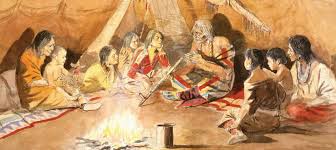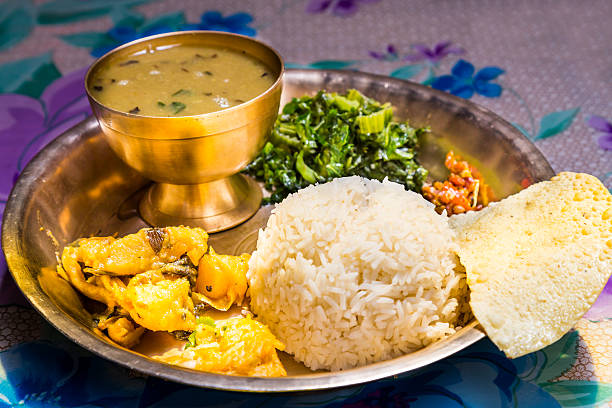Share this Article
Dal Bhat, a quintessential dish of Nepal, holds a revered place in the nation's culinary and cultural landscape. This humble combination of lentil soup (dal) and steamed rice (bhat) transcends mere sustenance, embodying the essence of Nepalese hospitality, tradition, and community.
Origins and Evolution
The roots of Dal Bhat trace back to the agrarian societies of the Indian subcontinent, where rice and lentils have been staple foods for centuries. In Nepal, the dish has evolved to incorporate local spices, vegetables, and preparation methods, reflecting the diverse geography and ethnic groups of the country. While rice is predominant in the Terai and hilly regions, alternative grains like buckwheat, barley, and millet are used in the high-altitude areas, where rice cultivation is challenging .
Components of Dal Bhat
1. Dal (Lentil Soup)
Dal is typically made from yellow or red lentils, simmered with a blend of spices such as turmeric, cumin, garlic, ginger, and chili. The soup's consistency can vary from thin to thick, depending on regional preferences. In the Terai, dal is often richer and spicier, while in the hilly regions, it tends to be lighter and more aromatic .
2. Bhat (Steamed Rice)
Steamed rice serves as the foundation of the meal, providing a neutral base that complements the flavors of the dal and side dishes. In high-altitude areas, where rice cultivation is limited, alternatives like dhindo (a buckwheat or millet-based dish) are consumed .
3. Tarkari (Vegetable Curry)
Accompanying the dal and rice, tarkari includes a variety of seasonal vegetables such as potatoes, cauliflower, spinach, and eggplant. These are cooked with spices to enhance flavor and nutritional value.
4. Achar (Pickle)
Achar adds a tangy and spicy element to the meal, often made from ingredients like mango, lime, or chili. It serves as a palate cleanser and digestive aid.
5. Additional Accompaniments
Depending on the region and occasion, dal bhat may be served with yogurt, papad (crispy lentil wafers), or meat curries, especially during festivals and special gatherings .
Nutritional Value
Dal Bhat offers a balanced combination of carbohydrates, proteins, and essential vitamins and minerals. The lentils provide plant-based protein and fiber, while the rice offers energy through carbohydrates. Vegetables contribute vitamins and minerals, and the spices used in preparation have various health benefits. This nutritional profile makes dal bhat an ideal meal for sustaining energy levels, particularly for individuals engaged in physically demanding activities like trekking .
Cultural Significance
1. Daily Ritual
In many Nepalese households, dal bhat is consumed twice daily—once in the morning and again in the evening. This regular consumption underscores its importance in daily life and its role in providing consistent nourishment
2. Symbol of Hospitality
Offering dal bhat to guests is a traditional gesture of respect and warmth in Nepalese culture. It signifies the host's generosity and desire to make guests feel welcome and valued .
3. Community and Family Bonding
The preparation and sharing of dal bhat often involve communal efforts, strengthening family ties and fostering a sense of community. In rural areas, it's common for neighbors to gather and share meals, reinforcing social bonds .
4. Role in Festivals and Celebrations
During festivals like Dashain and Tihar, dal bhat is often served with special dishes, including meat curries and desserts, highlighting its role in celebratory occasions .
Dal Bhat in Nepalese Trekking Culture
Dal Bhat has earned the nickname "Dal Bhat Power, 24 Hour" among trekkers in Nepal. This phrase reflects the meal's reputation for providing sustained energy, essential for tackling the demanding terrains of the Himalayas. Tea houses along trekking routes often serve unlimited refills of rice and lentils, making it both a nutritious and economical choice for trekkers .
Regional Variations
Dal bhat varies across Nepal's diverse regions, influenced by local ingredients, climate, and cultural practices.
- Terai Region: Features a richer, thicker dal with a variety of lentils and spices. Vegetables like tomatoes and okra are commonly used, and the meal is often accompanied by mango or lime achar.
- Hill Regions: Offers a lighter dal with aromatic spices such as cumin and coriander. Accompaniments may include gundruk (fermented leafy greens) or sinko (fermented bamboo shoots), adding unique flavors to the meal .
Dal Bhat in the Diaspora
For Nepalese communities abroad, dal bhat serves as a comforting reminder of home. Sharing this meal helps maintain cultural identity and provides a sense of connection to Nepalese heritage. In diaspora communities, dal bhat is often prepared during cultural festivals and gatherings, preserving traditions and fostering community cohesion .
Conclusion: Dal Bhat – The Heart of Nepalese Culture
Dal Bhat is more than just a meal; it is a profound reflection of Nepal's rich cultural tapestry. This humble combination of lentils and rice transcends the boundaries of sustenance, embodying the values of hospitality, community, and tradition that are deeply ingrained in Nepalese society.
Categories:
Food & Drink
Tags:
DalBhatPower







